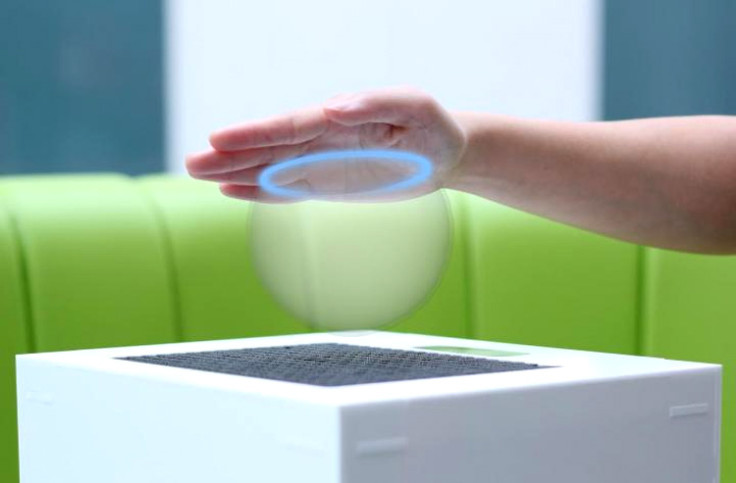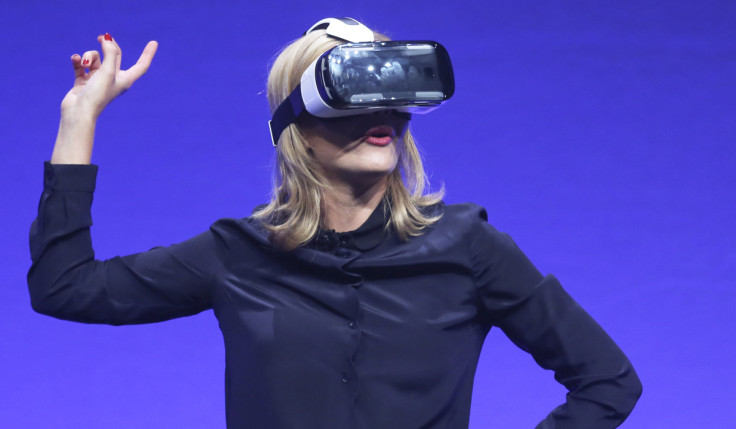Invisible 3D holograms that can be seen and felt using ultrasound created by scientists

Computer scientists at the University of Bristol have developed invisible 3D object holograms in mid-air that can be felt and seen using ultrasound, which could one day be used to help surgeons "feel a disease" in a CT scan.
The UltraHaptics technology works by pulsing high-frequency sound waves from tiny speakers that exert pressure on a person's hand to create the feel of haptic holograms, i.e. an object that can be touched by applying forces, vibrations or motions to the user.
The system also makes use of a Leap Motion sensor that can track the position of a person's hand in order to decide where in the air to create the object.
Their research, entitled "Rendering volumetric haptic shapes in mid-air using ultrasound", is published in the journal ACM Transactions on Graphics (TOG).
In order to be able to actually see the objects, the researchers projected the sound waves onto a thin layer of oil, and the depressions of the shapes and how the shapes move can clearly be seen on the surface.
Several different types of shapes including spheres and pyramids have been successfully created and although the objects currently being projected might not be perfect, the researchers say that it is enough to create touchable 3D holograms, as the brain has the ability to bend what it sees and feels to create a complete picture of the item.
It is also possible to improve the resolution of the object by adding more tiny speakers.
That's great, but what can you do with it?
There's been a lot of research into making things invisible and creating Harry Potter-esque invisibility cloaks, and while some of this research seems more like something nice to have, rather than being essential, there are several applications that UltraHaptics can be used for.
For one, the technology could be used to add an additional dimension of touch to 3D systems in virtual reality.

Virtual reality goggles like Oculus Rift and Samsung Gear VR are currently being developed which could greatly improve the experience for not just games but a wide variety of applications, from rehearsing surgeries, to training commercial pilots, to developing augmented reality retail experiences for shoppers.
The researchers also think that UltraHaptics technology could be useful in creating virtual displays of ancient objects stored in glass cases in museums.
In the future, once more work has been done into producing colours, textures and replicating an actual object's flexibility, museum visitors would be able to "touch" artefacts without damaging the real items.
"Touchable holograms, immersive virtual reality that you can feel and complex touchable controls in free space, are all possible ways of using this system," said Dr Ben Long, research assistant from the Bristol Interaction and Graphics (BIG) group in Bristol University's Department of Computer Science.
"In the future, people could feel holograms of objects that would not otherwise be touchable, such as feeling the differences between materials in a CT scan or understanding the shapes of artefacts in a museum."
The researchers will present their work on 3 December in Shenzhen, China at interactive tech conference SIGGRAPH Asia 2014.
© Copyright IBTimes 2025. All rights reserved.





















